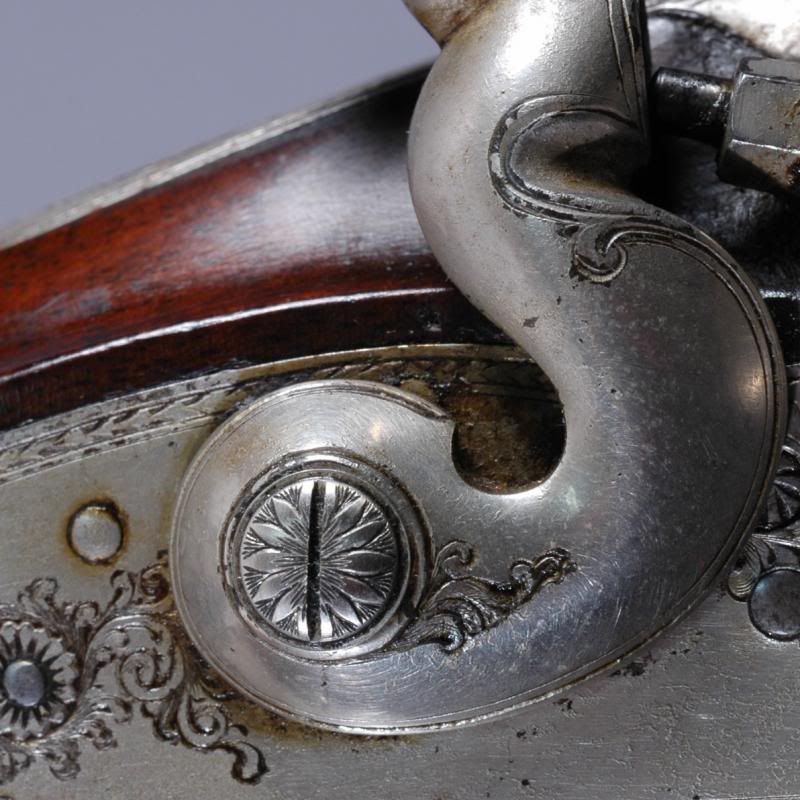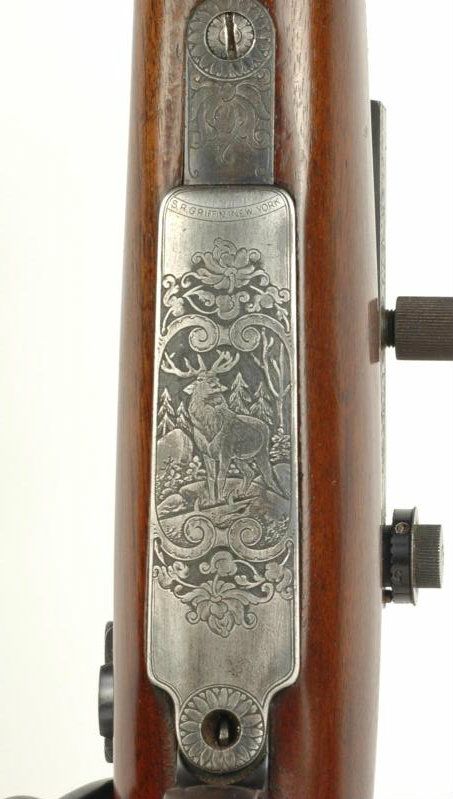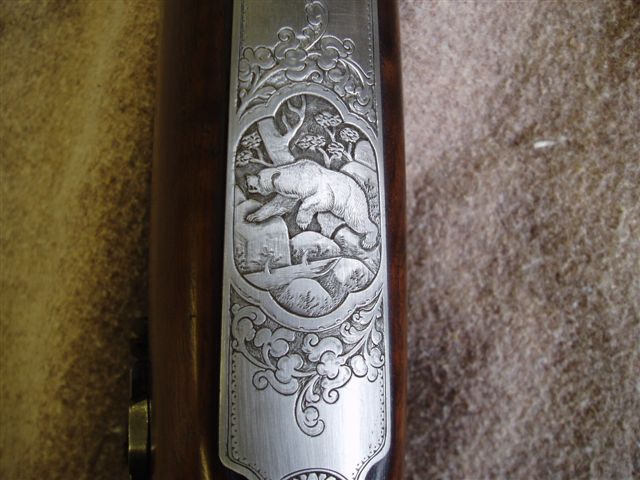|
S |
M |
T |
W |
T |
F |
S |
|
|
|
|
1
|
2
|
3
|
4
|
|
5
|
6
|
7
|
8
|
9
|
10
|
11
|
|
12
|
13
|
14
|
15
|
16
|
17
|
18
|
|
19
|
20
|
21
|
22
|
23
|
24
|
25
|
|
26
|
27
|
28
|
29
|
30
|
31
|
|
|
|
1 members (SKB),
435
guests, and
2
robots. |
|
Key:
Admin,
Global Mod,
Mod
|
|
|
Forums10
Topics39,496
Posts562,075
Members14,586
| |
Most Online9,918
Jul 28th, 2025
|
|
|
|
Joined: Dec 2011
Posts: 100
Sidelock
|

Sidelock
Joined: Dec 2011
Posts: 100 |
Short Hijack:
If you prove to yourself that a rifle will not shoot for instance 150gr. bullets, try something heavier, or more particularly longer. I find that often they will still shoot 220 grain bullets with long parallel sides and I would rather do that than change a barrel. Great post Michael.
|
|
|
|
|
Joined: Dec 2001
Posts: 6,881
Sidelock
|
OP

Sidelock
Joined: Dec 2001
Posts: 6,881 |
The Screwdriver, the rifles worst enemy.
It's seems older used rifles come in two categories those with pristine unturned screws and those that are buggered. Seems you never find just one, sometimes every screw on the rifle has been trashed even the little pointer on the Lyman 48.
Not only are the heads messed up but many time you can see where the screwdriver blade skidded across both the metal and the wood.
You all know what a proper fitting screwdriver is about so will skip that, this is about fixing the bad ones.
At one time I used the lathe to clean up the heads of screws but they just never looked right. Now I put the screw into my padded vise slot up and use a fine flat file to clean up the head. I then the same file with 320 grit paper and polish in the same direction as the slot. For really bad ones I have a set of screw slot files which are "Safe" on the sides.
I then drop the screw head down into a little Oxpho-blue in a small glass bottle and let it sit, clean with steel wool and oil. Over the years I have been tempted to get a dozen sets of 1903 screws and rust blue them but have not.
One reason so many screw heads are messed up is the screw slot was not cleaned before the screwdriver was used. I use a set of dental cleaning picks to get all of the crud out of the slot before I ever reach for the screwdriver.
MP Sadly Deceased as of 2/17/2014
|
|
|
|
|
Joined: Dec 2001
Posts: 6,881
Sidelock
|
OP

Sidelock
Joined: Dec 2001
Posts: 6,881 |
When you find an engraved screw head that has been abused my advice is to send it to an engraver and let him (or her) fix it. One time I bought a Joseph Tonks of Boston shotgun which had a broken off hammer screw. I got the threaded part out and made a new screw. I then sent the other screw and the one I made to an engraver. When I got it back I sent it to the late Dr Oscar Gaddy who then nickle plated the screw and then remove some nickle to match the other screw. There are no short cuts to doing it right. When all was said and done that was one darn expensive screw ;-). 
MP Sadly Deceased as of 2/17/2014
|
|
|
|
|
Joined: Feb 2005
Posts: 7,438 Likes: 1
Sidelock
|

Sidelock
Joined: Feb 2005
Posts: 7,438 Likes: 1 |
Great thread Michael:
One thing you didn't mention above regarding buggered(plain) screws. Often I've found that all the metal is still there it's just been "relocated" a bit. When I get a screw in this condition it goes into a padded vice where I'll try to tap the dislocated metal back where it belongs as much as possible.
I then will finish the screw basically as you described above.
Jim
The 2nd Amendment IS an unalienable right.
|
|
|
|
|
Joined: Dec 2001
Posts: 6,881
Sidelock
|
OP

Sidelock
Joined: Dec 2001
Posts: 6,881 |
I've done that on some and thanks for bringing it up. Everyone is welcome to post ideas, methods, how they do it or questions.
MP Sadly Deceased as of 2/17/2014
|
|
|
|
|
Joined: Dec 2001
Posts: 6,881
Sidelock
|
OP

Sidelock
Joined: Dec 2001
Posts: 6,881 |
Engraving problems are best left with an engraver to solve. I have a rifle that was engraved by R. J. Kornbrath that appeared to have had the bluing removed from the engraved area. Next to the others of the same vintage it just did not look right to my eye. Many times I had considered rust bluing the floorplate and trigger guard. One day I called a friend and we talked about rust bluing and carding on engraving. He told me he had the same thing and was thinking of doing his as well. I asked who the maker was and he told me S.R. Griffin the same as mine. We stopped and regrouped and dug out the SRG files and found several that had been done the same way. Seems like SRG like the contrast so after bluing he remove most of it. So even if you think you know what your doing let a pro look at it. Get a second opinion. My SRG,  My Friend's SRG, 
MP Sadly Deceased as of 2/17/2014
|
|
|
|
|
Joined: Jul 2012
Posts: 4,939 Likes: 342
Sidelock
|

Sidelock
Joined: Jul 2012
Posts: 4,939 Likes: 342 |
Jim,
When moving the metal back to the slot,I find it helps to hold a piece of steel, as thick as the slot is wide,in the slot and move the metal against it.It is very helpful, but not absolutly necessary, to have help to hold it in the slot(it all depends upon how badly abused the screw is).
Mike
|
|
|
|
|
Joined: Jan 2004
Posts: 7,518 Likes: 571
Sidelock
|

Sidelock
Joined: Jan 2004
Posts: 7,518 Likes: 571 |
As a leading suspect in the War against the Criminal Use of Screwdrivers, much of this is very helpful (yes, I already knew about correct sizes etc).
_________ BrentD, (Professor - just for Stan) =>/ ![[Linked Image from i.imgur.com]](https://i.imgur.com/qclHjMQ.jpg)
|
|
|
|
|
Joined: Dec 2001
Posts: 6,881
Sidelock
|
OP

Sidelock
Joined: Dec 2001
Posts: 6,881 |
Sooner or later we all run across a screw that will not loosen, frozen in place.
If you have been reading the gun boards for any length of time there are hundreds of ways to get that screw out. Heat, drill it out, penetrating oil, hitting the screwdriver with a hammer and list is endless.
The best way I know is to use the mill or drill press, put a Brownell bit ground to fit the slot into the chuck. Lower the quill or raise the table until the bit is solid straight into the bottom of the screw and lock everything down. Use you hand (make sure the equipment is unplugged before you start)and just turn the chuck. The screw will come out or the head will come off, then your lined up to drill it out if need be.
MP Sadly Deceased as of 2/17/2014
|
|
|
|
|
Joined: Jan 2004
Posts: 7,518 Likes: 571
Sidelock
|

Sidelock
Joined: Jan 2004
Posts: 7,518 Likes: 571 |
Having recently come across this very problem on the carrier screw for an 1899 Marlin 1895, I chose the heat method. Making another screw was not an option and bent two Brownell's bits in the chuck trying. Penetrating oil, heat and a shot more oil plus some good coaching from a friend, and I got the screw out in one piece, and still quite usable. I have no illusions about my abilities to drill out a screw w/o mucking up the hole (and a long one at that).
_________ BrentD, (Professor - just for Stan) =>/ ![[Linked Image from i.imgur.com]](https://i.imgur.com/qclHjMQ.jpg)
|
|
|
|
|